For me Lazuli Buntings have long been an elusive subject. Though they’re common in the western U.S. I rarely see them near my home and when I’ve found them in my travels they either won’t let me get close or they’re buried in thickets where I can’t get clean shots of them. All that changed on an early June photo/camping trip to Utah’s remote and visually stunning San Rafael Swell.
1/1600, f/8, ISO 400, 500 f/4, 1.4 tc
I found the males singing on territory and more cooperative than usual since their preferred singing perch was at the top of low shrubs and they were often so involved with their melodious territorial declarations that they sometimes let me approach them quite closely. This one is perched on greasewood which provided some nice green colors in this arid habitat that they prefer. I like this good look at the bi-colored bill of the species.
1/1250, f/7.1, ISO 400, 500 f/4, 1.4 tc
At times one of these males would give me a clean perch and background for a typical “bird on a stick” image.
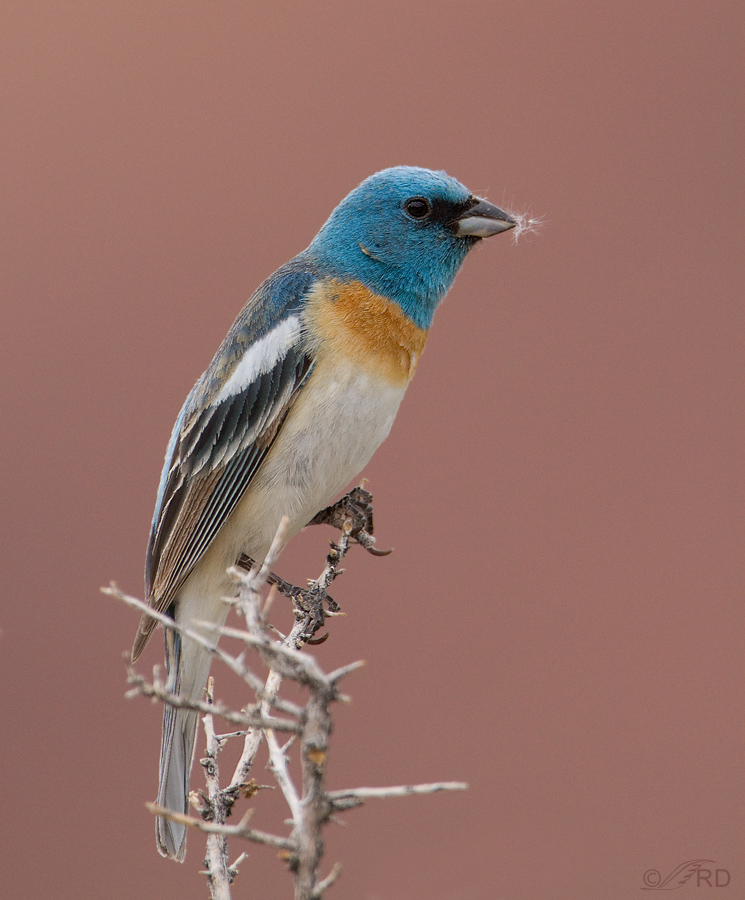 1/1250, f/6.3, ISO 400, 500 f/4, 1.4 tc
1/1250, f/6.3, ISO 400, 500 f/4, 1.4 tc
But more often than not the perch would be more cluttered. Here I’m less than happy with the out of focus twigs in the foreground but I liked the cottonwood “cotton” stuck to the bill. The unusual background color is from the Entrada Sandstone so common in the area.
1/1250, f/8, ISO 200, 500 f/4, 1.4 tc
I’ve seldom seen birds get so thoroughly wrapped up in their singing as these buntings did. Each one apparently had several “singing stations” within his territory and they would spend approximately the same amount of time at each post before moving on to the next one. If I could approach the bird within that time frame it would usually stay “on duty” there, even with me close, until it was time to move on to the next station,
1/2000, f/8, ISO 800, 500 f/4, 1.4 tc
Occasionally they would take a short break from their tuneful efforts to rearrange themselves on their perch. This one is turning to face a different direction before continuing his song which gave a pose that I thought was interesting.
1/800, f/6.3, ISO 400, 500 f/4, 1.4 tc
This is one of the few shots I got of a bird on a green perch with some of the Entrada Sandstone color in the background.
1/1250, f/6.3, ISO 500, 500 f/4, 1.4 tc
This male frustrated me. He gave me a variety of interesting poses but he insisted on performing on a very cluttered perch. He went back and forth, from poses like this pretty wing stretch…
1/1250, f/6.3, ISO 500, 500 f/4, 1.4 tc
to singing again.
1/1000, f/6.3, ISO 500, 500 f/4, 1.4 tc
He was so intent on his singing that even when an irresistible itch sneaked up on him he continued to sing as he scratched. Made me laugh when I saw it which caused a few blurry shots.
I thought there might be a few viewers unfamiliar with the San Rafael Swell who might be curious about what it’s like. This shot should give you an idea why I love it so much. It’s remote and has relatively few visitors (a huge appeal for me) and it is simply spectacular. What you see in the image is just a tiny portion of the swell – it’s 75 miles long and 40 miles wide. Here we’re looking down on the San Rafael River far below- typical habitat for Lazuli Buntings who prefer arid habitats with water nearby.
This was our camp site in “The Swell”. We were within walking distance from the river and had a blast with the buntings and Mountain Bluebirds in the area. Here you can see my good friend Mia scanning the nearby trees for more avian subjects.
Can’t wait to go back!
Ron


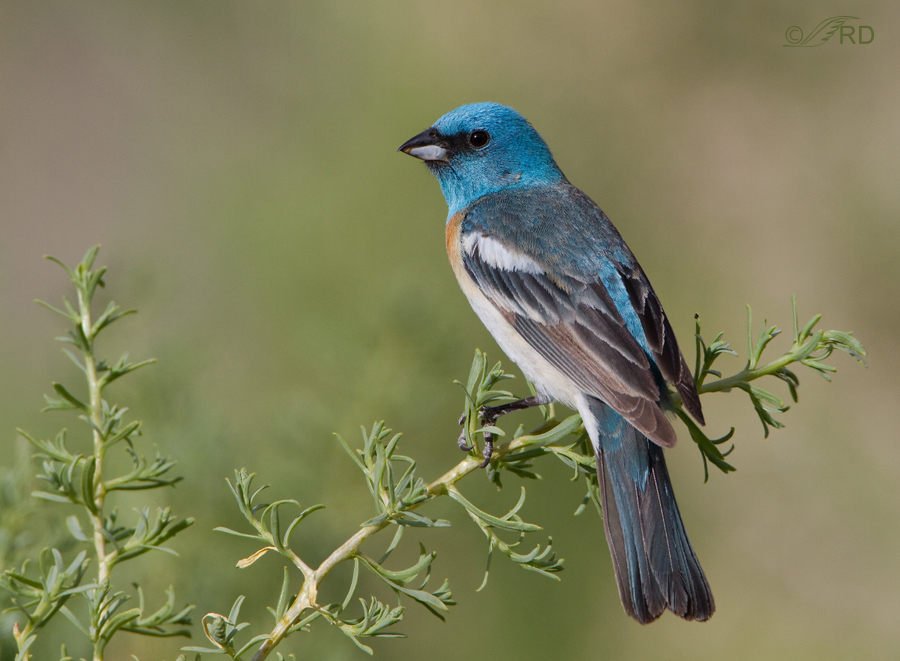
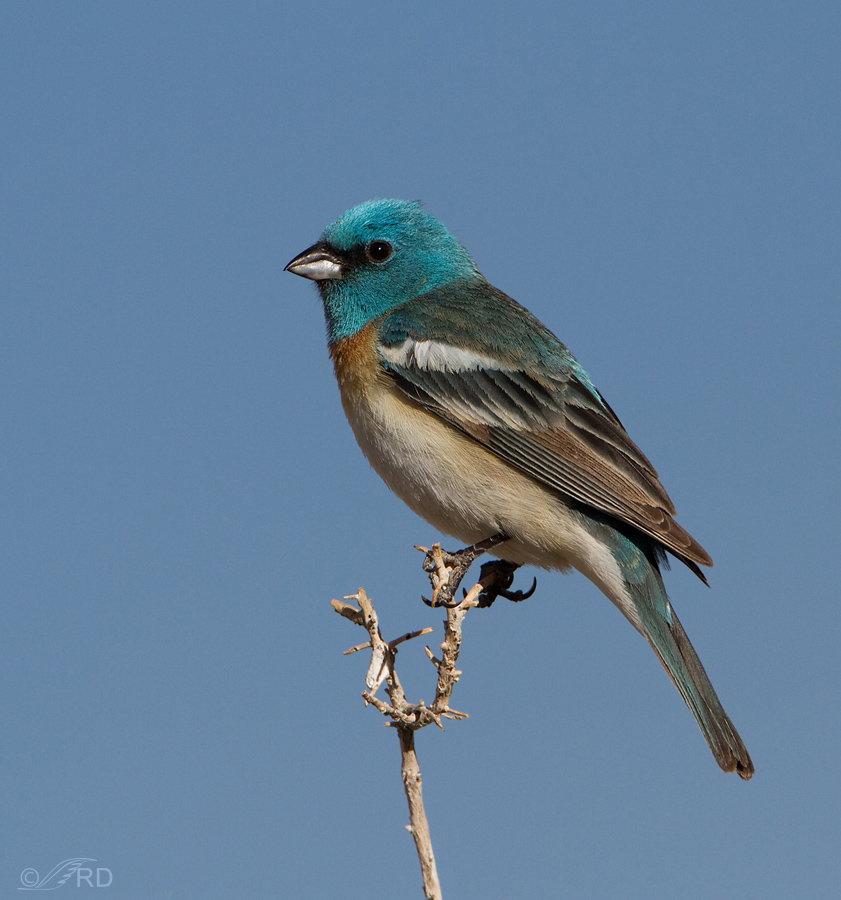

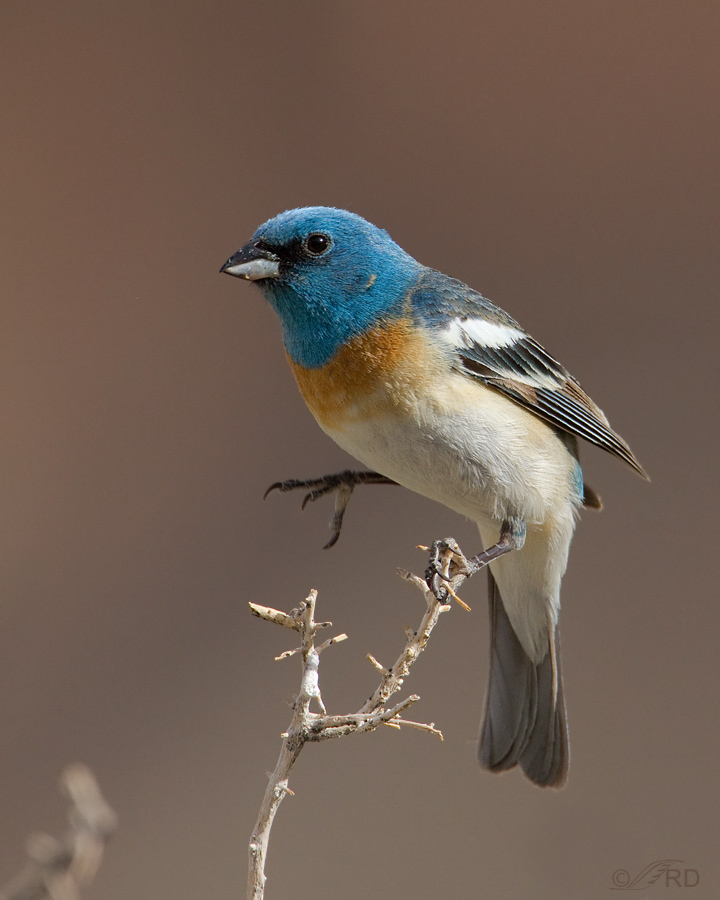
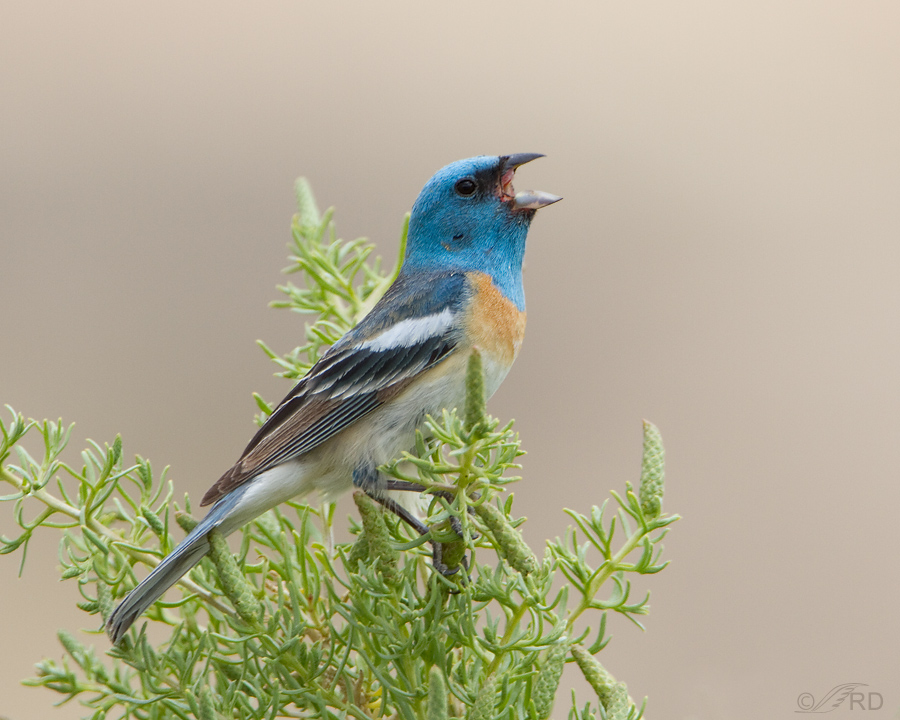

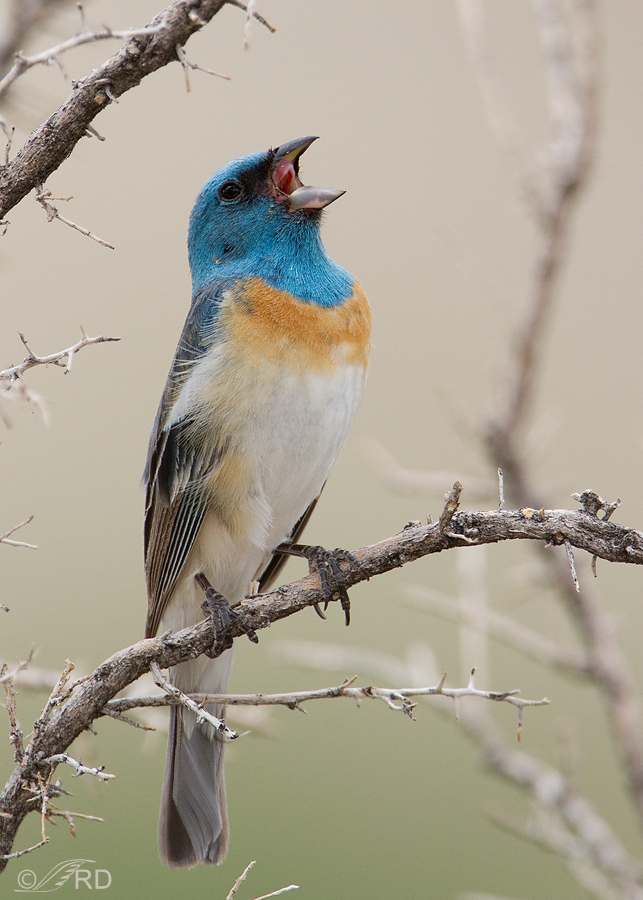

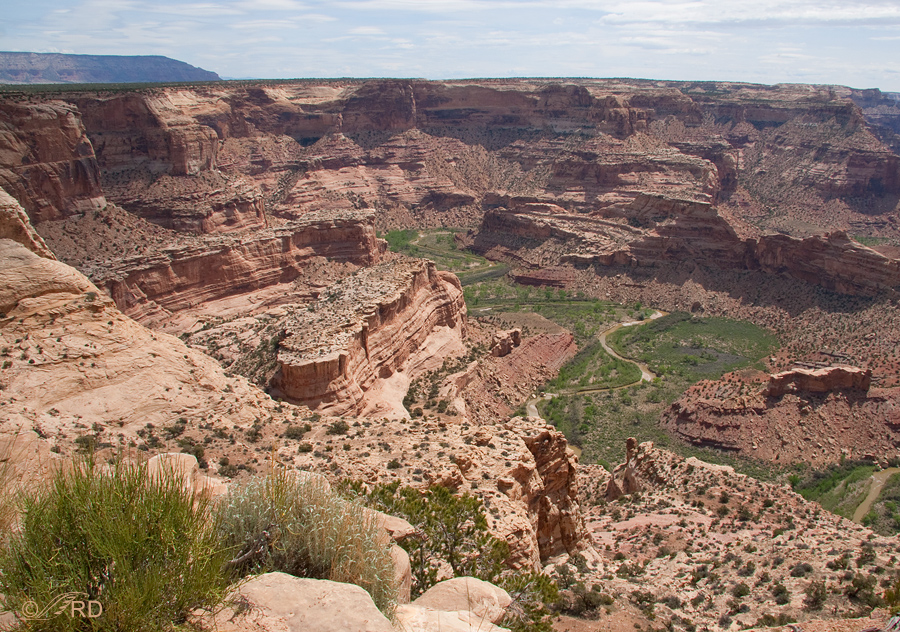
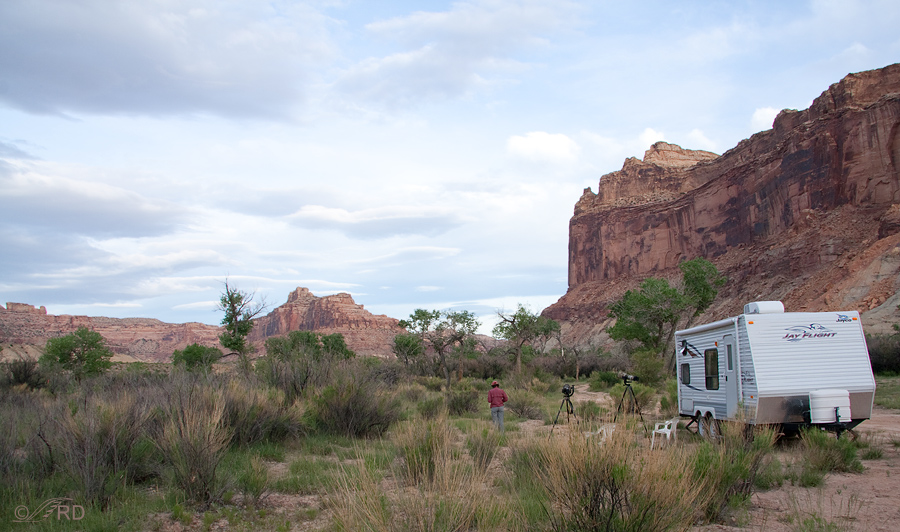
I’ve never seen so many beautiful pictures of these birds–let alone all in one place. I’m so glad that you put a link to this post in this morning’s post. Thank you! (p.s. I loved the sparrows from this morning as well)
Ron,
I like to thank you for your always interesting posts on your website. I consider it as one of my best resources for learning about bird photography.
I have been at the same campsite in April this year for the second time http://exnerimages.com/?s=san+rafael+swell . I tried to work on my landscape photography skills this time. The San Rafael Swell is a gorgeous area and it taught me that you don’t have to be in a National Park if you want to discover the beauty in this country.
Keep up with the good work on your website. Your photography is inspiring.
Iconic images of one of my most favorite bird species.
Mike, Neither did I – not until this trip had I ever been able to get detailed enough photos of them to notice the bi-colored bill.
Never realized they have a bi-colored bill!
I love the area, too and spend as much time as possible down Teasdale way. The bluebirds (we get both mountain and western) are a treat, as well as the huge flocks of pinion jays. I have lazuli buntings in my yard in SLC for most of the summer. Your photos are spectacular. Thanks.
Tana, are you from Teasdale. I was born there and most of my Dad’s family is still there. I love that area so much. I will have to go down for a bird outing this summer.
I don’t know which I love more, the bird or its habitat. And thank you so much for posting them both. I was unfamiliar with either of them and loved the scenery (avian and natural) you presented to us.
Wonderful wonderful images of one of North America’s most beautiful birds. They look like they were really going all-out in their songs. Someone should start a Lazuli Bunting rock band.